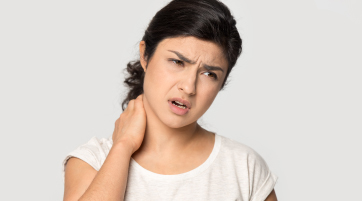

The human body is interwoven with an intricate system of muscles whose cooperation results in motion and support. The intercostal is one of these muscles which has an important role when it comes to respiration and stability of the ribcage. On the same note, intercostal muscles like other body muscles are vulnerable to strains and injuries.
This blog delves into intercostal muscle strain and everything you need to know about causes, symptoms and treatments for it. It’s important that, if you’re an athlete, a person who works out, and even someone just interested in these types of injuries of muscles, then get a better grasp on what the intercostal muscle is all about.
What are Intercostal Muscles?
Intercostal muscle is a set of muscles that lie in between the ribs. They consist of three layers:
⦁ External intercostal muscles
⦁ Internal intercostal muscles
⦁ Innermost intercostal muscles
These muscles work together, and they play a number of roles like helping in moving the rib cage while breathing, holding or providing stability to the chest and supporting upright position.
Understanding Intercostal Muscle Strain
Intercostal muscle strain occurs when these muscles are torn out or stretched beyond their physiologic limits through overuse, abrupt jerking movement or direct trauma. These kinds of stresses are very common among athletes and those who take part in exercises with frequent rotations, bending, as well as changing directions suddenly. Similarly, coughing, sneezing and in some cases prolonged cough associated with respiratory diseases are among the common causes.
Symptoms of Intercostal Muscle Strain
Pain is the main indication of intercostal muscle strain. The character of this pain usually consists of either a harsh or mild twinge that stretches in-between the ribs. Pain may also be aggravated by activities like deep breathing, coughing, laughing or twisting of the torso. Tenderness, muscle spasms, swelling and bruises are among other signs of the disease. Sometimes, it involves intense pain which may seem to move along the chest or back, leading to a misdiagnosis for injuries like ribs and heart.
Diagnosis and Treatment of Intercostal Muscle Strain
Treatment for intercostal muscle strain usually involves the administration of several pain relief methods and techniques for healing the muscles. This includes
- Ensure these muscles are adequately rested to heal and prevent further injury.
- Applying ice packs in order to lessen pain, bruises as well as swelling at the site.
- Using compression wraps or bandages to give support and stability to the strained muscles.
- That is by taking over-the-counter painkillers like NSAIDS to relieve the body, inflammation or pain.
- It includes physical therapy, including doing some exercises and stretching to improve the flexibility and muscles’ strength. You should only perform these types of exercises under the supervision of a physiotherapist.
How to Prevent It?
There are some protective actions that should be taken to avert developing intercostal muscle pain. While it may not be possible to eliminate the chance of strain, the following strategies can help reduce the likelihood of muscle injuries:
1. Proper Warm-up and Stretching
Warm up the body thoroughly before undertaking any physical activities. Dynamic stretches for the chest, back and abdominal muscles should be employed. These allow for better blood circulation, as well as the prevention of strains that may result from straining.
2. Core Strengthening
The core is a key element that supports the rib cage and muscles for stability. Make sure to include some of these exercises that target the core muscles like planks, bridges and abdominal crunch. A core-strengthening routine should be conducted together with a fitness professional and/or physical therapist to guarantee the correct technique and progression.
3. Gradual Progression
Take it slowly when embarking on a new exercise regime or when increasing your pace or mileage of physical activities. Prevent sudden, abrupt changes in the level of intensity or duration which subjects the different muscles to too much stress.
However, preemptive approaches such as warming up, strengthening the core, using a good form and learning to listen to your body can help to minimise these muscle strains. Gradually progress in activities, keep good posture, and ensure adequate rest & recuperation.
Do you have any particular concerns about muscle strain? A healthcare provider can conduct an assessment based on your personal needs. Adequate management of these muscles will enable you to lead a healthy life in addition to enhancing physical activities.
Conclusion
Although intercostal muscle strains may cause pain and affect your day-to-day activities, they are generally not severe and are easily treatable through careful handling. You can do a lot towards preventing injuries by knowing how they work and why some muscles may experience torsion. These muscle strains can be quite painful if you get them, thus visiting a doctor to arrive at an accurate prognosis as well as appropriate treatment is very necessary.
Frequently Asked Questions About Intercostal Muscle Strain
Q2. Is intercostal muscle strain normal?
It is not uncommon, particularly among individuals who engage in physical activities that involve repetitive movements, twisting or sudden changes in direction. Fitness enthusiasts and individuals who perform manual labour are more prone to experiencing these strains.
Q3. Can intercostal muscle strain be cured?
Yes, these muscle strains can be effectively treated, and most individuals make a full recovery with the right care. The treatment typically involves a combination of rest, pain management and rehabilitation exercises. Resting the affected area allows the muscles to heal, while pain management techniques like ice packs and over-the-counter pain medications can alleviate discomfort.
Q4. What does intercostal strain feel like?
Intercostal muscle strain typically causes pain that is localised between the ribs. The pain can vary from a sharp, stabbing sensation to a dull ache. Activities that involve deep breathing, coughing, laughing or twisting the torso may worsen the pain. Other symptoms include tenderness, muscle spasms, swelling and in some cases, bruising in the affected area.




